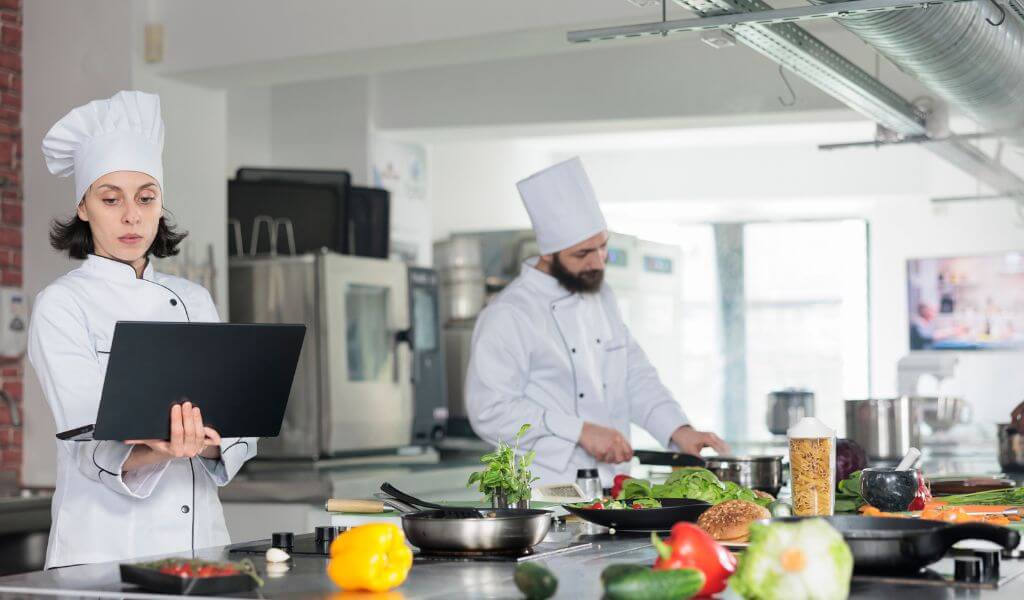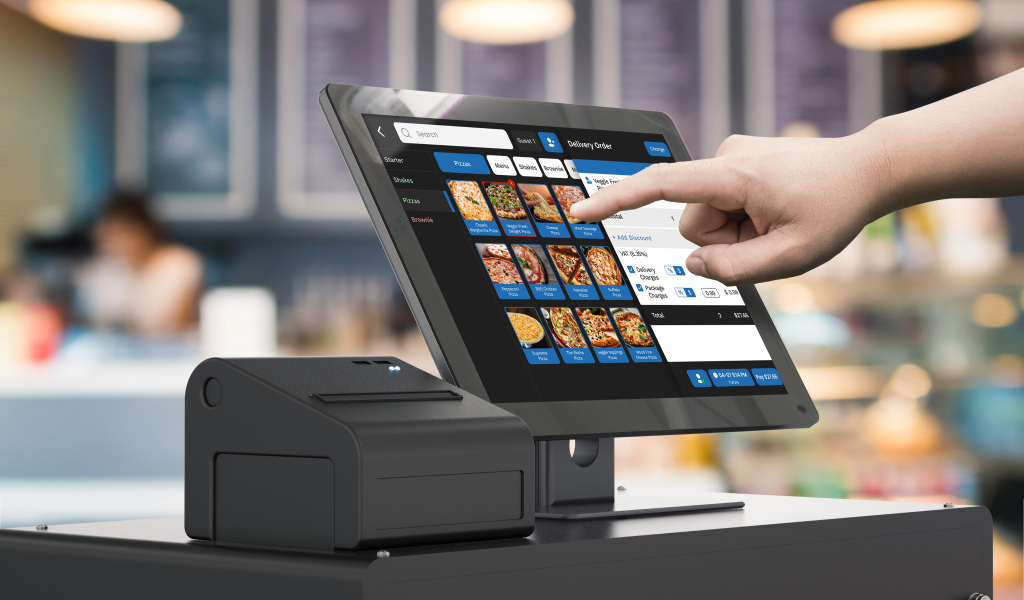Introduction to Front of the House and Back of the House
In restaurants the terms ‘Front of the House’ (FOH) and ‘Back of the House’ (BOH) are fundamental to understanding the operational dynamics and service delivery. The Front of the House refers to all areas and personnel that interact directly with customers. This includes roles such as hosts, servers, bartenders, and concierges, whose primary responsibility is to provide a welcoming and enjoyable experience for guests. The ambiance, customer service, and overall, first impression are critical components managed by the FOH team.
Conversely, the Back of the House encompasses all the behind-the-scenes functions that support the FOH. This includes kitchen staff, chefs, dishwashers, and maintenance teams, who ensure that the operational aspects run smoothly. The BOH is crucial for preparing and delivering high-quality food, maintaining cleanliness, and ensuring the overall infrastructure is functional and efficient.
Both the FOH and BOH are integral to delivering a seamless customer experience. While the FOH focuses on direct customer interactions, the BOH ensures that the foundation for these interactions is solid. The efficiency and harmony between these two segments are pivotal in creating a positive and memorable experience for guests. Key differences between the two include their primary focus areas, interaction with customers, and the nature of their roles and responsibilities.
This introductory overview sets the stage for a more detailed exploration of the specific roles, responsibilities, and challenges associated with the FOH and BOH. Understanding these distinctions is essential for anyone looking to gain a comprehensive grasp of the restaurant’s inner workings.
Let's explore more on each – FOH and BOH

It is important to understand the difference between each FOH and BOH to understand the intricacies of each role so restaurants can define ways how to have them coordinate efficiently.
Roles and Responsibilities in the Front of the House
The “Front of the House” (FOH) in the restaurant is the area where direct interactions with customers take place. It encompasses various roles and responsibilities that are integral to creating a positive customer experience. Key positions in the FOH include hosts, servers, bartenders, and front desk staff, each playing a distinct role in ensuring service excellence.
Hosts are often the first point of contact for customers. Their primary responsibilities include greeting guests, managing reservations, and seating patrons. Effective hosts possess strong organizational and communication skills, as they need to coordinate with other FOH staff to maintain a smooth flow of service. A welcoming demeanor is crucial, as it sets the tone for the customer’s entire experience.
Servers, also known as waitstaff, are responsible for taking orders, delivering food and beverages, and attending to customer needs throughout their dining experience. Excellent interpersonal skills and a thorough knowledge of the menu are essential for servers, as they often make recommendations and handle special requests. Their ability to provide prompt and attentive service directly impacts customer satisfaction and repeat business.
Bartenders, who work behind the bar, are tasked with preparing and serving alcoholic and non-alcoholic drinks. In addition to their mixology skills, bartenders must be adept at engaging with customers, managing bar inventory, and maintaining a clean and organized work area. Their role requires a blend of technical proficiency and customer service expertise.
Front desk staff, commonly found in hotels and resorts, manage check-ins and check-outs, handle reservations, and address guest inquiries and concerns. They serve as the information hub for the establishment, often assisting with directions, recommendations, and other guest needs. Proficiency in problem-solving and a professional demeanor are vital for front desk personnel, as they frequently handle delicate situations and ensure guest satisfaction.
Overall, the roles and responsibilities in the Front of the House are diverse but unified by a common goal: providing exceptional customer service. The skills required for FOH staff include strong communication, multitasking, and a customer-oriented mindset, all of which contribute to a seamless and enjoyable experience for guests.
Roles and Responsibilities in the Back of the House

The Back of the House (BOH) in the restaurant is a vital component that ensures the seamless operation of an establishment. This section covers the essential roles and responsibilities of BOH staff, including chefs, line cooks, dishwashers, and housekeeping staff, who all work diligently behind the scenes.
Chefs play a central role in the BOH, responsible for menu creation, ingredient sourcing, and overall kitchen management. They must possess a high level of culinary expertise, creativity, and leadership skills. Chefs often oversee a team of line cooks, ensuring that each dish meets the establishment’s standards and is prepared efficiently. Line cooks, on the other hand, are responsible for the actual preparation and cooking of food, following the chef’s recipes and instructions. They require a thorough understanding of kitchen operations, food safety, and time management.
Dishwashers, though often overlooked, are crucial to the BOH. They ensure that all kitchen utensils, pots, pans, and plates are cleaned and sanitized, maintaining a hygienic environment. Their role is fundamental in preventing delays and ensuring a steady supply of clean equipment for cooking and serving. Housekeeping staff, another integral part of the BOH, are responsible for maintaining cleanliness and order throughout the establishment. They handle tasks such as cleaning guest rooms, public areas, and sometimes even the kitchen, ensuring a comfortable and sanitary environment for both guests and staff.
Teamwork in the BOH is of utmost importance. Effective communication and collaboration among staff members are essential to handle the fast-paced and often high-pressure environment. Proper training and skills development are also critical for BOH roles. Chefs and line cooks typically undergo formal culinary education and apprenticeships, while dishwashers and housekeeping staff receive on-the-job training to master their tasks efficiently.
In summary, the Back of the House is the backbone of any restaurant establishment, with each role contributing to the overall success and smooth operation of the business. The dedication and expertise of BOH staff are indispensable, ensuring that guests receive top-notch service and a memorable experience.
Key Differences in Work Environment and Culture
The restaurant is distinctly divided into two main areas: the Front of the House (FOH) and the Back of the House (BOH). Each area has its unique work environment and culture, shaped by the tasks performed and the staff roles. Understanding these differences is crucial for comprehending how the restaurant functions as a cohesive unit.
One of the primary distinctions lies in the pace of work. In the FOH, the tempo is heavily influenced by customer interaction. Staff members must be quick, responsive, and adaptable to cater to the needs of guests in real-time. The FOH is a dynamic environment where employees must juggle multiple tasks, from greeting guests and taking orders to handling complaints and ensuring a pleasant dining experience. On the contrary, the BOH operates at a different rhythm. While still fast paced, the BOH is more focused on efficiency and precision. Chefs, dishwashers, and other BOH staff work in a structured manner to prepare and deliver food promptly, ensuring that the quality and presentation meet the establishment’s standards.
Customer interaction is another defining factor. FOH staff are the face of the establishment, engaging directly with guests. This constant interaction requires excellent communication skills, patience, and a friendly demeanor. In contrast, BOH employees have minimal direct contact with customers. Their primary focus is on the culinary and operational aspects, making teamwork and effective internal communication vital to maintain workflow and service quality.
Dress codes also reflect the divergent cultures. FOH employees often wear uniforms that are professional and visually appealing, designed to make a positive impression on guests. These uniforms can range from formal attire in upscale establishments to more casual but coordinated outfits in relaxed settings. BOH staff, however, prioritize practicality and safety. Their attire typically includes chef coats, aprons, and non-slip shoes, emphasizing functionality and protection over aesthetic considerations.
Communication styles differ significantly between the two areas. In the FOH, interaction is more personable and customer-oriented, focusing on delivering exceptional service and addressing guest needs promptly. In the BOH, communication is more direct and task-focused, aiming to streamline operations and ensure that food preparation and delivery processes are executed seamlessly.
These differences in work environment and culture between the Front of the House and Back of the House profoundly impact the overall work experience and team dynamics. Recognizing and respecting these distinctions is essential for fostering a collaborative and efficient restaurant operation.
Communication and Coordination Between FOH and BOH

Effective communication and coordination between the Front of the House (FOH) and Back of the House (BOH) are integral to the smooth operation of any restaurant establishment. The seamless interaction between these two critical areas ensures that guests receive impeccable service, enhancing their overall experience. Various channels and methods are employed to facilitate this communication, including verbal interactions, written notes, and digital systems.
Verbal communication remains one of the most direct and effective ways for FOH and BOH staff to exchange information. Servers, hosts, and kitchen staff often engage in face-to-face discussions or use intercom systems to relay orders, special requests, and other pertinent details. Written notes, such as order slips or kitchen tickets, provide a tangible reference for chefs and line cooks, reducing the likelihood of errors.
Digital communication systems, particularly Point of Sale (POS) systems, have revolutionized the way orders are processed. These systems allow for real-time updates and clear documentation of customer preferences, dietary restrictions, and any modifications to standard menu items. Additionally, team collaboration tools and messaging apps facilitate ongoing dialogue between FOH and BOH, ensuring that both sides are aligned on daily operations and any immediate concerns.
Despite these channels, several common challenges can impede effective communication. Misunderstandings due to language barriers, high noise levels in busy kitchens, and the stress of peak service times can lead to errors and inefficiencies. To mitigate these issues, many establishments invest in ongoing training programs focused on communication skills and team-building exercises.
Strategies for improving coordination include regular team meetings, where staff from both FOH and BOH can discuss upcoming events, menu changes, and any operational issues. Cross-training employees to understand the roles and responsibilities of their counterparts can also foster a sense of empathy and teamwork. Implementing clear, consistent communication protocols and encouraging an open feedback culture further enhance collaboration.
Real-life examples of successful coordination can be seen in renowned establishments where the synergy between FOH and BOH is palpable. For instance, Michelin-starred restaurants often attribute their success to meticulous planning and flawless execution, facilitated by robust communication frameworks. Best practices from these establishments, such as pre-shift briefings and post-service debriefs, can serve as valuable models for others in the restaurant industry.
Necessity of having a right POS solution

A robust POS solution is essential for establishing seamless coordination between the Front of the House (FOH) and Back of the House (BOH) in a restaurant. By integrating real-time order tracking, inventory management, and communication tools, a comprehensive POS system ensures that staff can efficiently manage customer orders, reduce errors, and maintain consistent service quality.
This connectivity allows servers to promptly relay orders to the kitchen, track preparation times, and update customers on the status of their meals, while the kitchen staff can focus on timely and accurate food preparation.
Ultimately, a well-designed POS solution enhances operational efficiency, improves customer satisfaction, and boosts overall restaurant performance.
With Priority1 POS, you get everything in one place. The system is designed to keep the end needs of the restaurants in mind and simplifies establishing efficient coordination between Front of the House and Back of the House.
Impact on Customer Experience
The customer experience is a critical factor in determining the success of any establishment within the restaurant. The seamless interaction between the Front of the House (FOH) and the Back of the House (BOH) plays a vital role in delivering an exceptional experience to guests. This collaboration affects various aspects such as service speed, food quality, and the overall ambiance, which collectively contribute to customer satisfaction.
Firstly, service speed is a significant determinant of customer experience. In a well-coordinated environment, the FOH staff can efficiently communicate orders and special requests to the BOH, ensuring that meals are prepared promptly and delivered to the table without unnecessary delays. For instance, in a bustling restaurant, the prompt relay of orders from servers to the kitchen staff can significantly reduce waiting times, thereby enhancing the dining experience.
Food quality is another crucial component influenced by the synergy between the FOH and BOH. The kitchen staff’s expertise in preparing dishes to perfection must be complemented by the FOH staff’s ability to present and serve the food attractively. A slight miscommunication or delay can compromise the quality of the food, leading to a subpar experience for the customer. A case study of a Michelin-starred restaurant revealed that meticulous coordination between chefs and servers was key to maintaining the high standards expected by patrons.
Moreover, the overall ambiance of an establishment is shaped by the harmonious working relationship between FOH and BOH. For example, the cleanliness and aesthetic appeal of the dining area, managed by the FOH, should be supported by the BOH’s adherence to hygiene and food safety standards. A cohesive team effort ensures that customers enjoy a pleasant and memorable atmosphere.
In conclusion, the interplay between the Front of the House and the Back of the House has a profound impact on customer experience. When both sections work in unison, it results in efficient service, high-quality food, and an inviting ambiance, all of which are essential for achieving customer satisfaction and loyalty.
Training and Development for FOH and BOH Staff
Training and development are pivotal in the restaurant, serving as the backbone for both Front of the House (FOH) and Back of the House (BOH) operations. Effective training programs ensure that employees are equipped with the necessary skills to perform their roles efficiently, contributing to overall guest satisfaction and operational excellence.
Types of Training Programs
For FOH staff, training programs often emphasize customer service, communication, and interpersonal skills. These programs may include modules on greeting guests, handling complaints, and upselling services. However, BOH training focuses more on technical skills such as culinary techniques, food safety, and inventory management. Both types of training can be delivered through on-the-job training, workshops, online courses, and certifications.
Skills Development
FOH staff need to develop strong communication skills, emotional intelligence, and a deep understanding of the establishment’s offerings. Training programs often include role-playing exercises to simulate real-life scenarios, helping staff to respond effectively to various situations. For BOH staff, the emphasis is on precision, efficiency, and maintaining high standards of hygiene and safety. Skills such as knife handling, recipe standardization, and equipment maintenance are critical.
Continuous Learning
Continuous learning is essential for both FOH and BOH staff to keep up with trends, new technologies, and evolving customer expectations. Regular training updates and refresher courses ensure that staff remain competent and motivated. For instance, FOH staff might benefit from advanced courses in mixology or sommelier training, while BOH staff could explore new culinary techniques or sustainable practices.
The differences in training focus for FOH and BOH roles are clear yet complementary. While FOH training is customer-centric, aiming to enhance guest interaction and satisfaction, BOH training is operation-centric, ensuring the smooth and efficient functioning of kitchen and support areas. Both are crucial for the success of any restaurant establishment.
Conclusion: Harmonizing the Front and Back of the House
The restaurant thrives on the seamless integration of the Front of the House (FOH) and the Back of the House (BOH). Throughout this blog post, we have delved into the distinct roles and responsibilities that each sector plays. The FOH, with its direct customer interactions, ensures that guests receive attentive and personable service. Meanwhile, the BOH, operating behind the scenes, is crucial in preparing high-quality food and maintaining operational efficiency.
Both the FOH and BOH are indispensable to a successful restaurant operation. The synergy between these two areas hinges on effective communication, rigorous training, and strong teamwork. Communication acts as a bridge, allowing the FOH to relay customer preferences and feedback to the BOH, which in turn can make the necessary adjustments to enhance guest satisfaction. Training is another cornerstone, equipping employees with the skills and knowledge needed to perform their roles proficiently while understanding the importance of the other side’s contributions.
Teamwork, perhaps the most vital element, fosters a collaborative environment where the FOH and BOH function as a unified entity. When staff members appreciate and respect each other’s roles, it leads to a more harmonious and efficient operation, ultimately benefiting the guests. This collaboration enhances the guest experience and contributes to the establishment’s success and reputation.
Managers and staff must strive for harmony between the FOH and BOH. By fostering a culture of communication, continuous training, and teamwork, restaurant operations can ensure a seamless and enjoyable experience for their customers. As we move forward, let us remember that the strength of any restaurant venture lies in the concerted efforts of both the Front and Back of the House, working together to create memorable experiences for all guests.
With the right tools such as an extensively built POS solution that helps you manage everything in one place, restaurants can save their staff from a lot of redundant communication and replace errors and mistakes with efficiency and productivity.
Reach us out at [email protected] to setup a quick call today!

 Cart is empty
Cart is empty 

